Pradeep Kumar Panda
The non‐farm economic activities carried out in India have lot of diversity in terms of organization and management. They are carried out by units registered /licensed under various laws and regulations or by self‐employed/ own account establishments not registered/licensed. Some of them operate in fixed visible premises/ location or at different premises/ location and some operate within household categorized as invisible units.
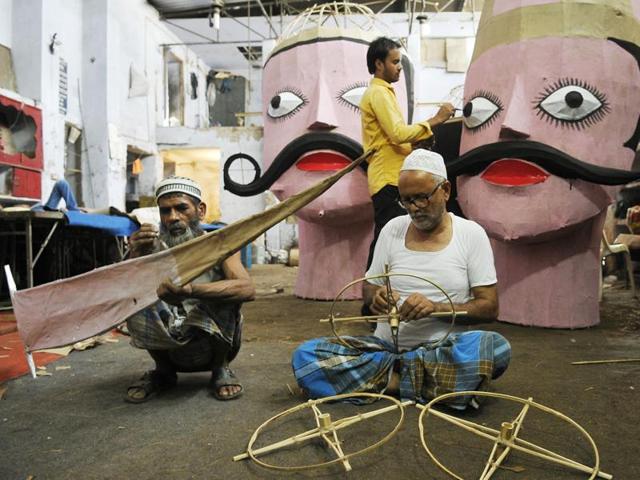
Some units operate only to serve other unit(s). Some operate seasonally or casually and some may not operate throughout a given year. They are engaged in different economic activities, relating to primary, secondary and tertiary sector. Some of them may engage themselves in multiple economic activities at any given point of time and some may diversify their activities from time to time.
With so much diversity, the units engaged in non‐farm economic activities, if measured properly, will give indications about location‐wise economic activities, occupations, employment and relatively inactive locations in terms of the characteristics measured.
Conducting periodic Economic Census has been the means of measuring the diversity of non‐farm economic activities in all its major dimensions. In respect of units operating in fixed premises/ locations, the Economic Census is expected to provide updates on units actually operative to the concerned registering /licensing authorities, most of whom have no mechanism to maintain live registers. In respect of units without fixed premises /location and invisible units, the Economic Census is expected to provide location‐wise information on number of units along with other characteristics.
The census also provides information on clustering of various economic activities/ occupations at different locations and on lack of adequate involvement in such avocations in some locations. Comparing the information provided by two consecutive Economic Censuses will throw light on locations becoming more and more economically active, location that are not so, and on emerging activities/ occupations, and those that are waning away over time. All this information is very important for policymakers in the government at all levels for evolving policy interventions.
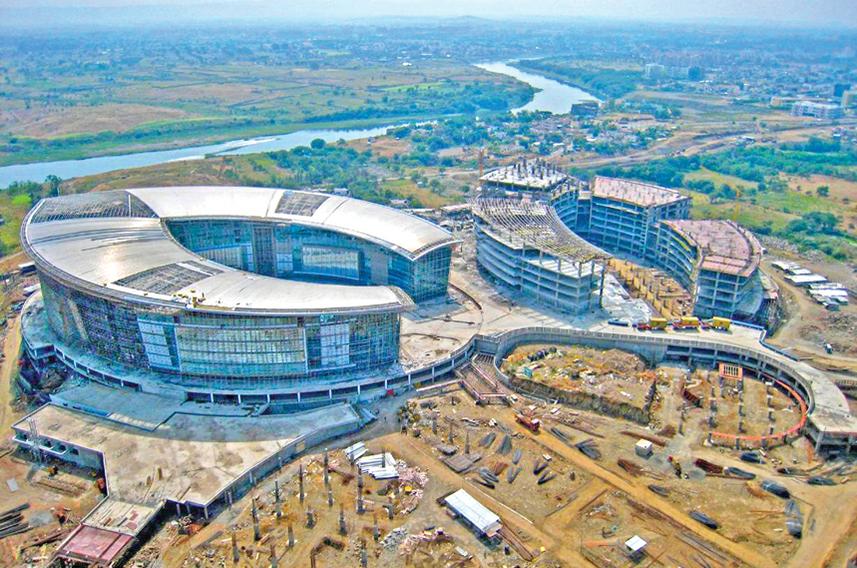
For the statistical system at National and sub‐national level, Economic Census has been very important national statistical program in which the center and all the States/ UTs simultaneously participate with a common goal. Statistical measurement of non‐farm sector requires differential treatment in coverage of units both larger and smaller in size. Larger units will be organized into a dynamic register, known as ‘Business Register’. The other components (unorganized or informal sector) will be organized into location‐wise information, to be used as frame for conducting periodic sample surveys for further studies.
The information collected through Economic Census, and the follow up surveys using these Business Registers and the frame will be useful for measuring performance of the sectors and its sub‐sectors d for compilation of quarterly/annual national/sub‐national accounts.
Economic Censuses conducted in the past
The First Economic Census was conducted throughout the country, except Lakshadweep, during 1977 in collaboration with the States/ Union Territories (UTs). The coverage was restricted to only non‐agricultural establishments employing at least one hired worker on a fairly regular basis. Data on items such as description of activity, number of persons usually working, type of ownership, etc. were collected.
The subsequent Censuses were conducted in the years 1980, 1990, 1998, 2005. The 6th and the latest census was conducted in 2013. These Censuses were conducted in collaboration with the States/ UTs. The report of the 6th Economic Census is available on MoSPI website.
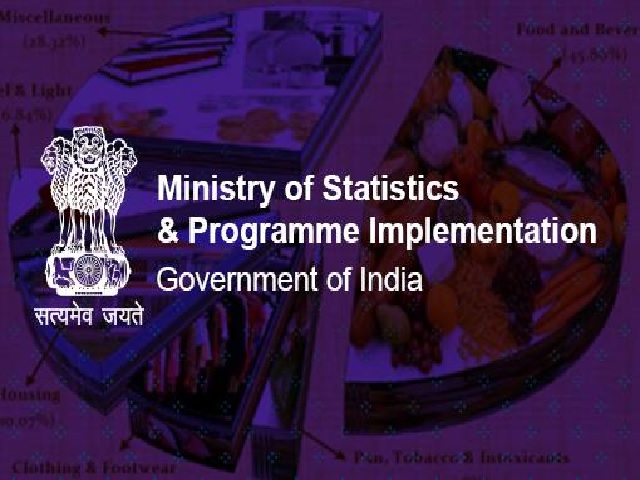
Salient features of the Sixth Economic Census (2013)
The Sixth Economic Census was conducted in all the States/UTs. All economic activities (agricultural and non‐agricultural), except those involved in crop production and plantation, public administration, defense and compulsory social security, related to production and/or distribution of goods and/or services other than for the sole purpose of own consumption were covered. However, the following activities were kept out of the purview of the Sixth EC:
- Establishments of shelter‐less and nomadic population, which keep on moving from place to place and camp either without shelter or with makeshift
- Establishments engaged in illegal activities like smuggling, gambling, beggary, prostitution,
- Domestic servants, whether they work in one household or in a number of households, drivers, who undertake jobs for others on wages.
- All wage‐paid employees of casual
- Household members engaged in household
- Persons doing different types of jobs depending on the availability of work g. loading, unloading, helping a mason or a carpenter, doing earthwork for a contractor.
- Household members working for other households and earning some money which is
- Households in which none of the members is engaged in any gainful activity e. Households depending on remittance, rent, interest, pension etc.
Enumeration Blocks of Population Census 2011 were used as primary geographical units for both urban and rural areas for the purpose of listing of establishments. Use of Enumeration Blocks facilitates linking of Population Census database with that of Economic Census database at the lower geographical levels such as wards and villages.
About 8.5 lakh enumerators and 3.2 lakh supervisors were deployed to collect information. For listing purposes, all houses/ households/establishments were visited. The field work was done under the statutory provisions of the Collection of Statistics Act, 2008 and Rules made thereunder.
Challenges faced during conduct of 6th EC
Data collection for the 6th EC was carried out over a period of 1 year 2 months in the country. This resulted in reference period varying across different locations in the country. The fieldwork was assigned in some State/ UTs to persons like Anganwadi workers, Gram sevaks, Panchayat secretaries, Unemployed Youth, NGO Workers, etc. who were handling the data collection exercise for the first time. It took 3 years 6 months to bring out the final report of the 6th EC after its launch in January 2013 due to manual intervention in generation of the reports. Business Register could not be prepared by some States.
Need for 7th Economic Census
The Government had appointed a Task Force on Improving Employment Data in May, 2017, under the Chairpersonship of Vice Chairman, NITI Aayog to suggest ways and means of improving employment data. The Task Force made various recommendations in its report submitted in August, 2017, including that the Ministry of Statistics and Programme Implementation may undertake the Economic Census every 3 years, beginning with the 7th Economic Census so that more frequent information on the various economic characteristics of establishments are available and could be compared with the existing databases in the GSTN, EPFO, MCA etc.
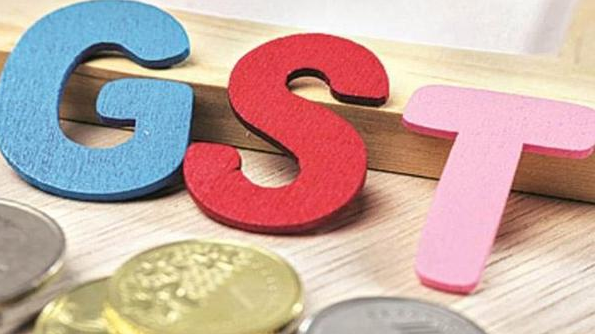
Accordingly, the 7th Economic Census has been conceived to provide
- A nation‐wide Business Register as per international practices adopted by developing countries and in line with UNSD
- Detailed information on economic variables, activity wise, of all the non‐ agricultural establishments of the country including its distribution at all India, State, district, village/ward levels for comprehensive analysis of the structure of the economy;
- Information on establishments registered under MSME Development Act, their assets and other economic criteria;
- Information on number of workers working in establishments (which are under operation), activity wise and area wise on;
- List of all establishments, tagged by geographical location up to village/ward level for local level planning purposes;
Scope and coverage proposed for 7th Economic Census
All households/ establishments engaged in non‐agricultural economic activities including construction, except public administration, defense and compulsory social security are proposed to be covered in the 7th Economic Census. Once the model of conduct of the 7th EC stabilizes, the scope can be enhanced to include these sectors from the 8th Census onwards.
All households and establishments are proposed to be covered in the 7th Economic Census. Enumeration blocks of Population Census 2011 will form the primary geographical unit.
One of the main aims of the Economic Census is preparation of a National Business Register which can be linked with existing databases at the central and state government levels. It is also proposed to have in place a threshold turnover in monetary terms for such households/ establishments for inclusion in the coverage of the Census.
Establishments with fixed structures are proposed to be covered at the place of their operation. On the other hand, economic activities that are carried out without any fixed structures are proposed to be covered at the place of the residence of the owner. All types of establishments (perennial, seasonal and casual), existing on the date of census, although may not be in operation on the day due to certain reasons, are also proposed to be covered in the census.
Business Register
The Business Register was originally conceptualized for collating the list of all registered establishments pursuing various economic activities relating to production of goods & services.
The 13th Finance Commission recommended development of Business Registers at District level so that it can be used for estimating District Domestic Product. The Business Register developed by few of the States/ UTs with the funds provided by the 13th Finance Commission is primarily an accumulation of establishments registered under the following Acts and registering authorities:
- Companies Act, 1956
- Factories Act, 1948
- Shops and Commercial Establishments Act
- Societies Registration Act
- Cooperative Societies Act
- Khadi and Village Industries Board
- Directorate of Industries (District Industries Centre)
Some of the States/ UTs have taken proactive measures to include establishments registered under Acts other than the ones mentioned above for defining the scope of their State Business Register. The States/ UTs were advised to produce a 16‐digit location code (BRN) for a business establishment in the register with the help of Census codes. The activity has been taken up on piecemeal basis and even after a long time has elapsed since the funds were provided under 13th Finance Commission, most of the State/ UTs are not in a position to come up with their Business Registers.
In this regard, for development of a dynamic Business Register during the 7th Economic Census, the following measures are proposed:
- Create and maintain an online portal at the national level that will periodically get updated with the State databases where available and those States not having digital databases may use the national database for regular updation through standard processes. Feasibility of providing funds from SSSP project of MoSPI for this purpose may be explored.
- The National Business Register will establish dynamic linkages, using API/Web Services with the existing national databases for 6thEconomic Census, Annual Survey of Industries, MCA‐21, GST, EPFO, ESIC, Udyog Aadhar (MSME) and list of establishments maintained under State Registering
- As a prelude to the Economic Census, the de‐duplicating of these databases will be done using Big Data Analytics and cross validated with the field work of Economic Census and geo‐tagging of the The National Business Register system is proposed to generate a unique Business Registration Number (BRN) for each establishment.
- Nominate nodal officers at the Central and State level for ensuring regular updation and maintenance of this database and coordinating with MoSPI for the National Business Register.
- An Inter‐ministerial coordination mechanism will be established for smooth conduct of the Economic Census activity as envisaged Frequent stakeholder consultation in this regard will also be undertaken. For undertaking the Economic Census, the statutory provisions of the Collection of Statistics Act, 2008 may be leveraged for achieving the desired results.
Reference period and field work
Reference period for items of information would more or less correspond to the survey period only as information on the operational parameters, such as type of industrial activity; type of ownership; nature of economic activity; registered or not; social group, religion and sex of the owner (for proprietary establishments), would pertain to the ground truth found on the day of the visit. However, in the case of information on number of persons working in the firm (male, female, hired / non‐hired, contractual), major source of finance and would relate to last working day of the establishment/firm in relation to the day of visit. For information on annual turnover and investment in plant and machinery, annual data pertaining to last financial year would be asked.
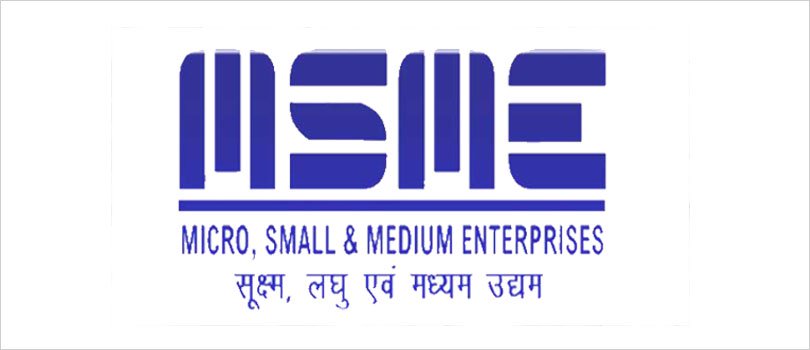
The entire field work is proposed to be completed during June 2019 to September 2019 across all State/ UTs. The field work envisages extensive use of technology for primary level data capture and concurrent release of key estimates after effective supervision and monitoring. Modalities of engagement of manpower for field work need to be worked out in consultation with stakeholders.
The joint supervision and monitoring would comprise officers and field staff of State Governments, Field Operations Division (FOD) of NSSO and Regional Offices of Development Commissioner of MSME. The entire field work will require extensive training of enumerators and supervisors which is proposed to be conducted in November and December 2018, modalities of which need to be worked out.
Awareness and publicity
For conducting a massive operation of the Economic Census, it is important that full‐fledged publicity and awareness campaign is proposed to be launched through print and electronic media in regional languages to elicit maximum cooperation from the informants. For this purpose, appropriate publicity campaign has to be undertaken in all States/ UTs before and during the field work.
Use of technology
The Census will be conducted using an ICT web‐based platform, through customized software designed for the purpose of data capturing, validation and report generation along with features of geo‐tagging and back end integration with other data sources such as GST. The data entry will be done through mobile devices. The entire work of software development and procurement of related hardware will be outsourced to a specialist professional agency.
The integration of data from platforms such as GSTN, MCA‐21, EPFO and ESIC along with the information available under 6th Economic Census and their de‐duplication through the use of advanced technology needs to be taken on priority basis before the start of conduct of Census to avoid duplication of efforts. This will ensure a starting frame which can be fed into the data capturing software for verification during field work and updation, thereby preparing a basis for the Business Register.
The data collection and validation will be concurrently done at the back end through pre‐ designed algorithms incorporated into the software designed for the purpose. There will also be facility for generation of MIS reports to monitor the field work regularly.
Release of results
The results of 7th EC are proposed to be decentralized to the local authorities under which MoSPI will provide authorization for dissemination of provisional results as per plan given below:
- District level – 1 month (after completion of data collection and validation of same)
- State level – 2 months (after vetting from MoSPI)
Reports and tables at national/ sub‐national levels will be generated through the software based on pre‐defined templates. Final reports for release will be prepared on the basis of these tables. The entire validation and tabulation will be completed by all State/ UTs by October 2019 so that national level provisional results can be released by December, 2019. The results will be made available to the public through a data portal linked with payment gateway for procurement of unit level data, etc.
Manpower requirement
The census operations as indicated above are massive and require continuous and focused monitoring at National level. As also stated above that the primary data collection will be outsourced, however, a dedicated Monitoring and Command Centre for the Economic Census would need to be established. This will facilitate taking up the preparatory work of the following Economic Census for improvements in scope, coverage and use of technology.
The Monitoring and Command Centre for the Economic Census may have an appropriate contingent of officers and staff to service the centre and do regular activity to ensure constant updation of the National Business Register. A detailed proposal will be processed separately.
Infrastructure requirements
Separate office space is required to be hired/ purchased for housing the e IT/ office equipment of Economic Census and for creating the Monitoring Center. Also the requisite Office equipment /IT equipment may be purchased for these officers/ staff. before the start of the data collection
Statutory support
For the success of an operation of such magnitude and importance as the Economic Census, the provisions of the Collection of Statistics Act, 2008 will be invoked so that the field investigators have fewer challenges in having access to households/ establishments for collecting the relevant information. Data confidentiality and privacy of information is to be ensured at all stages.
The Collection of Statistics Act, 2008, empowers appropriate Government to notify and appoint a Statistics Officer responsible for collection of data. The Act also puts responsibility on informants for providing prescribed information truthfully. The Act also empowers Statistics Officers to engage requisite manpower for collection of statistics and has enabling provision for allowing access within household/ establishment premises for canvassing of information.
The Act provides penalties for giving false answer or not giving answers at all. At the same time, it calls upon the statistics officers to discharge their duties faithfully and warns them against putting any question to a person which is not covered by the questionnaire and they are required to record the answers as given by the person enumerated. One of the most important provisions of law is the guarantee it provides for the maintenance of secrecy of the information collected at the census of each individual. The Act requires strict secrecy to be maintained about the individual’s record which should not be used for any purpose against the individual except for an offence as prescribed within the law. The information thus collected can be used only for statistical purposes in which the individual data get masked.
Proposed deliverables
- Frame of all establishments engaged in economic activity, tagged by their geographic location
- Provisional results at Sub‐national and local levels by local authorities within a week of collection of field work
- National report on economic characteristics of establishments, both in the organized and unorganized sector and the geographic distribution of such characteristics, including employment
- National Business Register and Unique Identification Code framework (including legal framework) for establishments
- Villages with no economic activity also will be identified for the policy purposes
- Unit level data on demand from the National Portal Framework for dynamic updation of Business Register by local authorities and establishing linkage with benefits to be availed under various Central/ State Government
Governance Framework
A Steering Committee under the Chairmanship of Secretary (S&PI) will be constituted to guide on logistics, monitoring and overall implementation of 7th Economic Census. The Steering Committee will include representatives of Ministry of Electronics and Information Technology, Ministry of Corporate Affairs, Ministry of Labour and Employment, NITI Aayog, Registrar General of India.
In addition, a Task Group under the Chairmanship of Director General (ES), MoSPI will be constituted to guide on technical matters related to conduct of 7th Economic Census. The Task Group will include representatives of NCAER, EPIC‐India, Department of Industrial Policy and Promotion, M/o Labour and Employment, GST Network, Reserve Bank of India, NITI Aayog. This document is prepared for deliberation by the Task Group and recommending various technical modalities related to the conduct of the Census.
The State/ UT Governments have constituted State Level Coordination Committee under the Chairmanship of Chief Secretary and District Level Coordination Committee under District Collector to ensure smooth conduct of the Census work and also for finalization of results in the State/ District.
(Writer is an economist based in New Delhi. Views are personal)




















